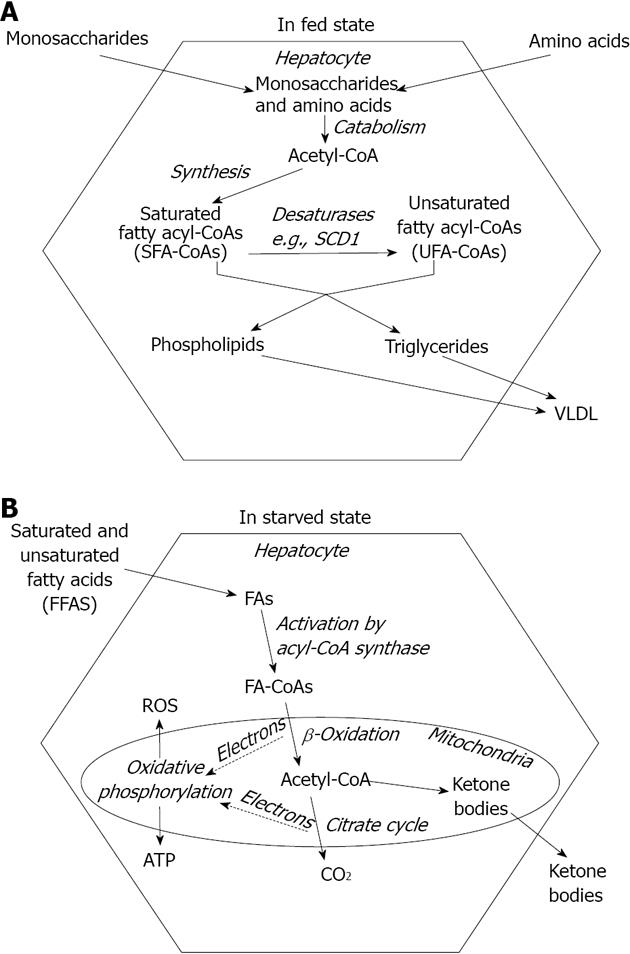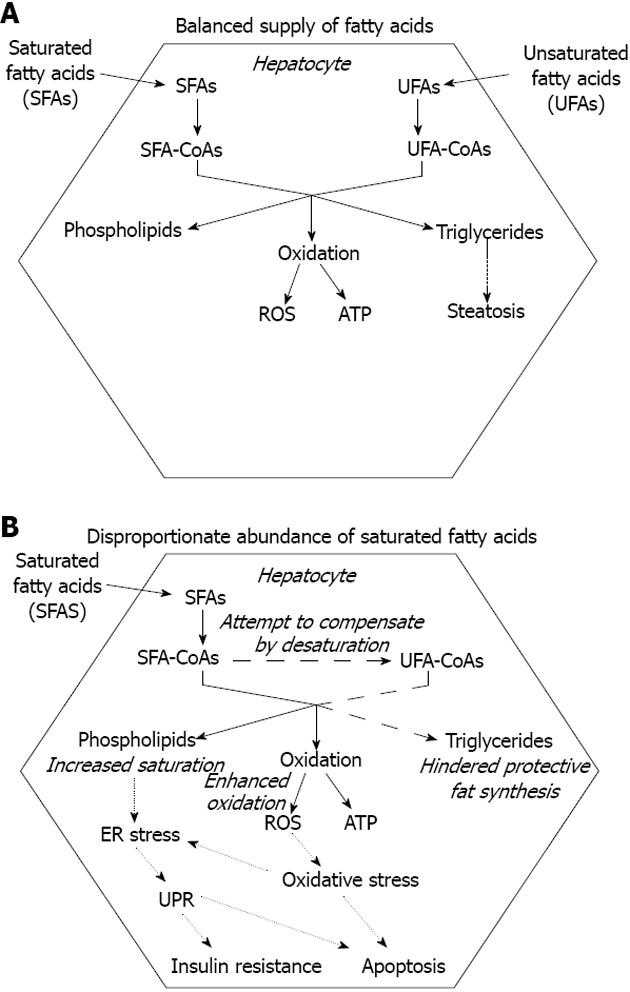Copyright
©2013 Baishideng Publishing Group Co.
World J Hepatol. Oct 27, 2013; 5(10): 550-557
Published online Oct 27, 2013. doi: 10.4254/wjh.v5.i10.550
Published online Oct 27, 2013. doi: 10.4254/wjh.v5.i10.550
Figure 1 Fatty acid metabolism in the liver.
A: In fed state, monosaccharides and amino acids are taken up from the portal blood and converted to fatty acyl-CoAs through acetyl-CoA intermediate; The primary endogenous fatty acids (e.g., palmitate) are saturated. Formation of mono- or polyunsaturated fatty acids involves modification(s) by desaturase enzymes; Newly synthesized fatty acids are inserted into complex (saponifiable) lipids, which in turn are packed in very low density lipoprotein (VLDL) particles and so secreted from the hepatocytes; B: In starvation, free fatty acids (FFAs) derive from triglyceride mobilization in the adipose tissue. After a protein-mediated uptake across the plasma membrane, they are activated to acyl-CoA, and catabolized in the mitochondria through β-oxidation and citrate cycle. These metabolic pathways provide electrons to oxidative phosphorylation, the major source of ATP and ROS in aerobic cells. Shortage of citrate cycle intermediates leads to accumulation of acetyl-CoA, and thence enhances the synthesis of ketone bodies.
Figure 2 Fatty acid toxicity in the liver.
A: Balanced (over) supply of saturated and unsaturated fatty acids allows the hepatocyte to enhance triglyceride synthesis and deposition. Storage of excess fatty acids prevents superfluous fatty acid oxidation and thereby protects against oxidative stress; B: Disproportionate abundance of saturated fatty acids might not be compensated for by fatty acid desaturation (dashed lines). Hindrance of protective fat synthesis favors fatty acid oxidation and leads to excessive ROS generation; The emerging oxidative stress and the increased saturation of membrane lipids trigger the endoplasmic reticulum (ER) stress response, which contributes to insulin resistance and further enhances cell death (dotted lines).
- Citation: Zámbó V, Simon-Szabó L, Szelényi P, Kereszturi &, Bánhegyi G, Csala M. Lipotoxicity in the liver. World J Hepatol 2013; 5(10): 550-557
- URL: https://www.wjgnet.com/1948-5182/full/v5/i10/550.htm
- DOI: https://dx.doi.org/10.4254/wjh.v5.i10.550










